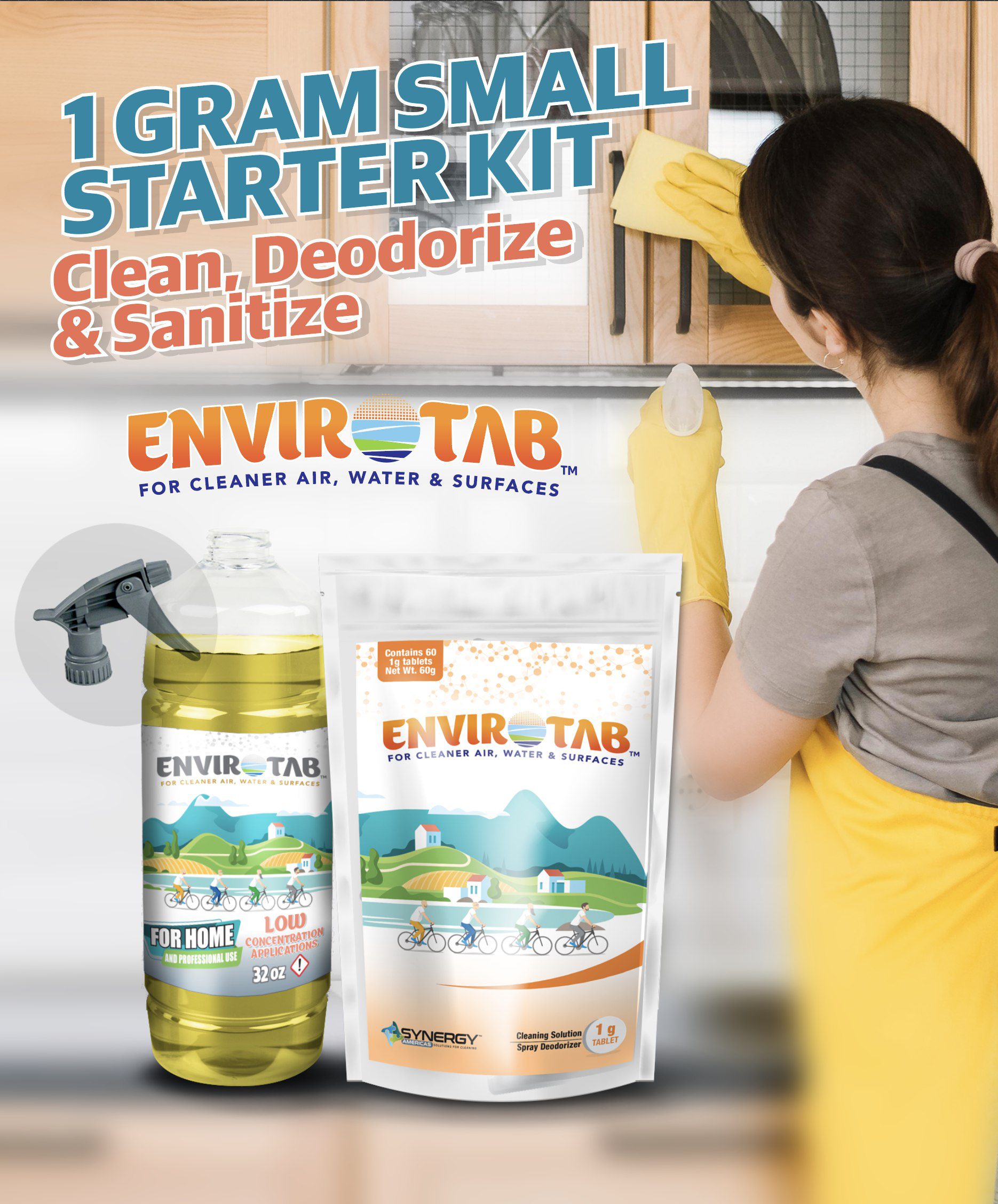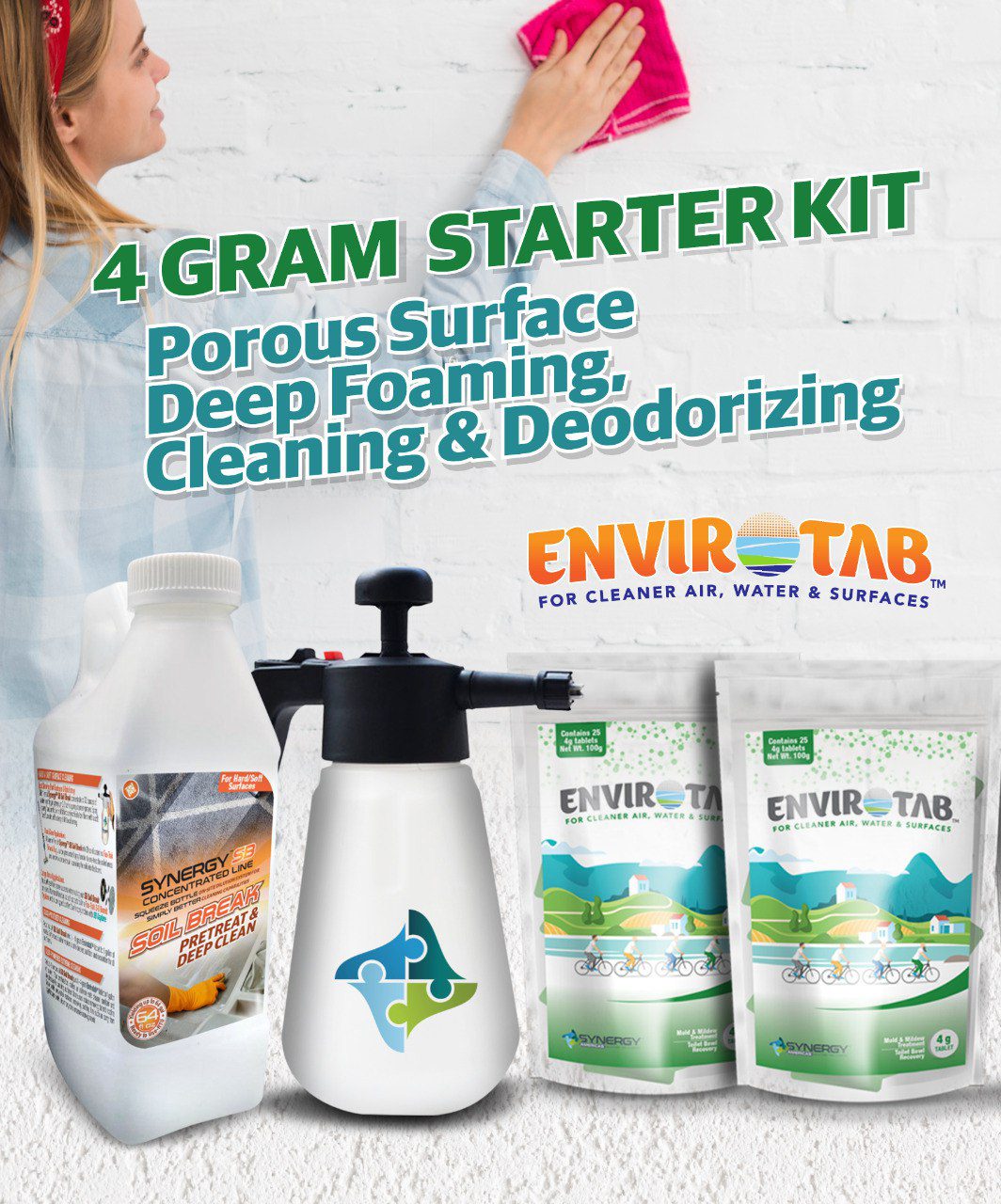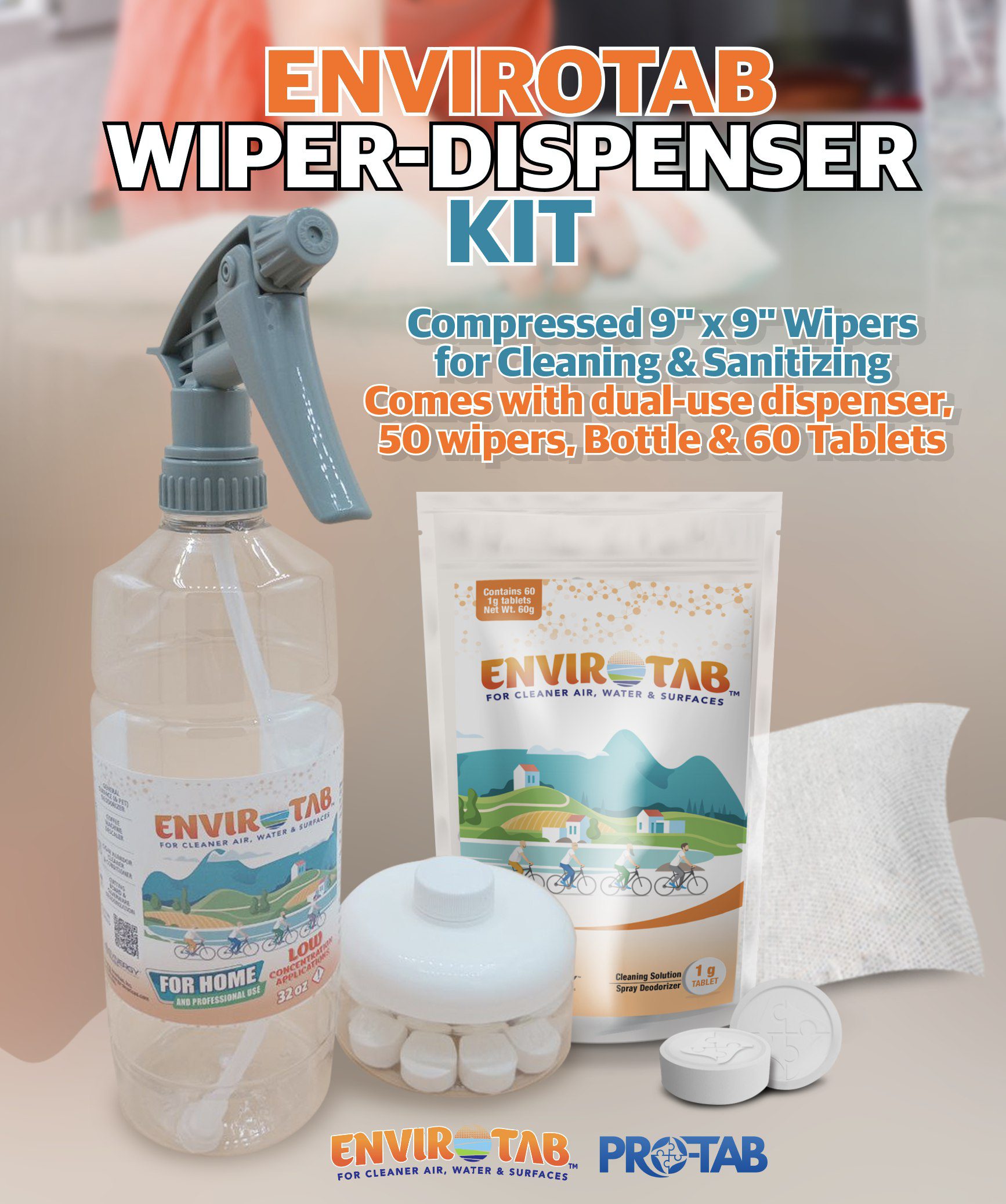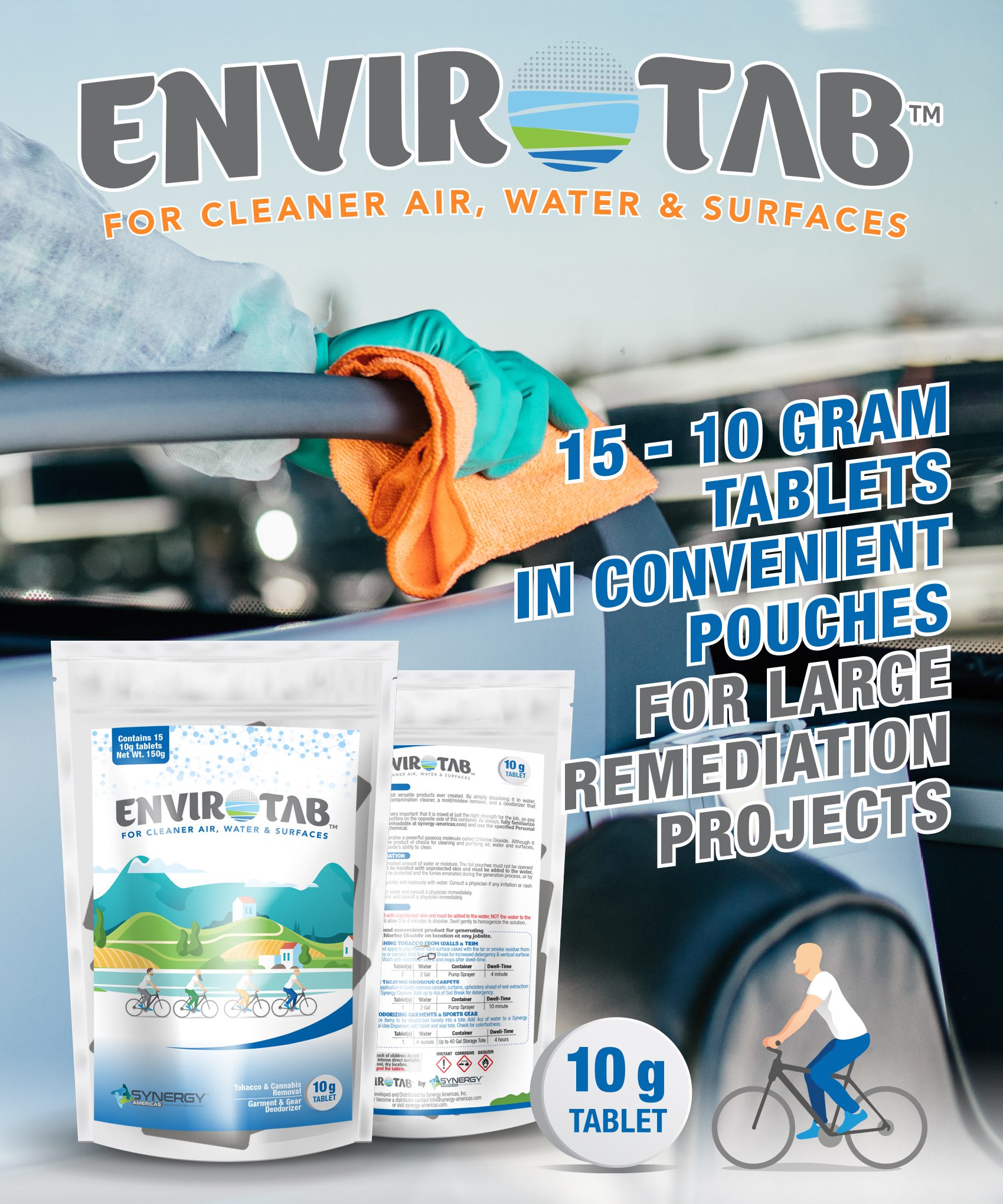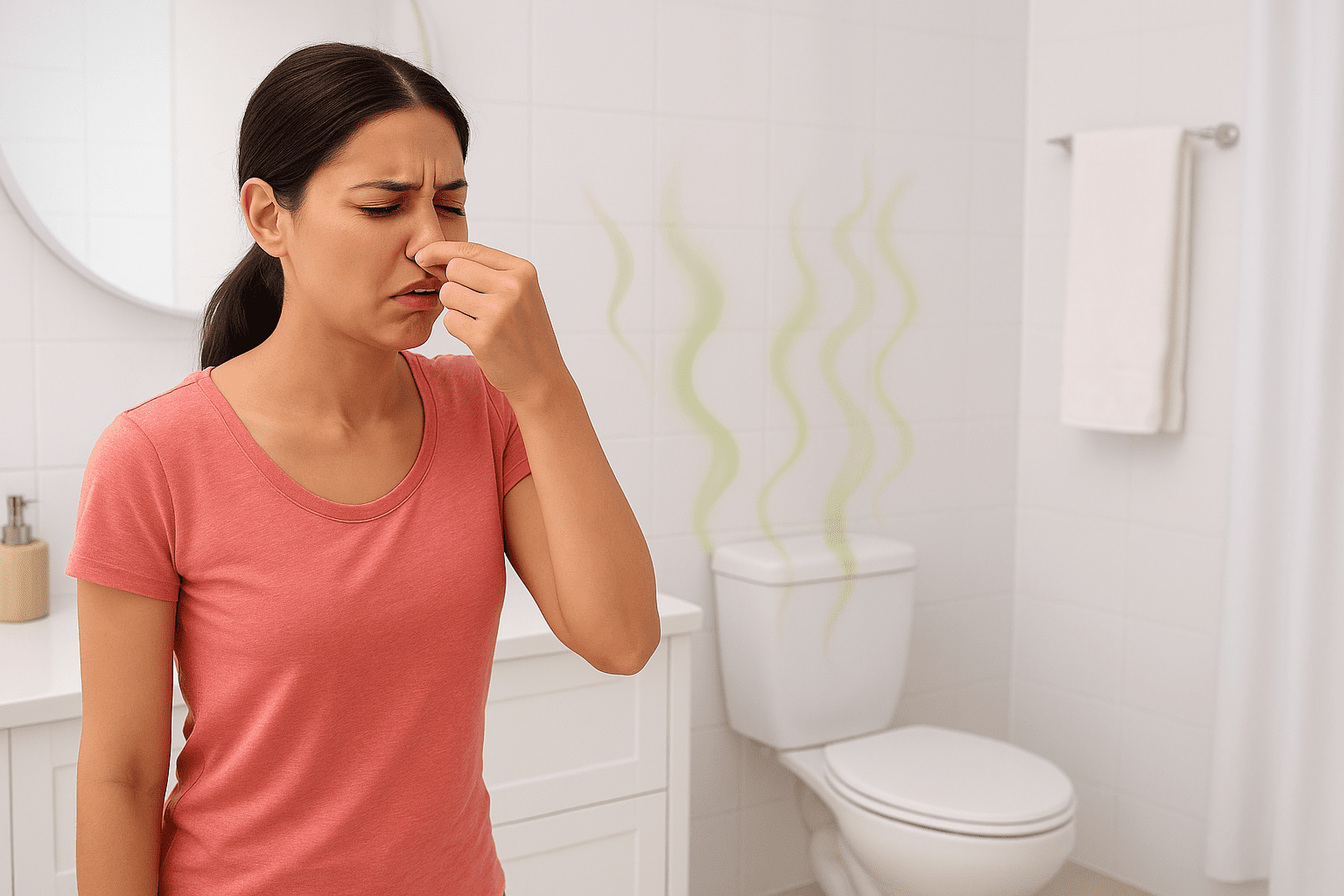 Flush with Confidence: How to Clean Your Toilet with ClO₂ & Keep Your Septic System Smiling
Flush with Confidence: How to Clean Your Toilet with ClO₂ & Keep Your Septic System Smiling
Let’s face it—no one ever hops into a bathroom and thinks, “Oh yes, I absolutely love the lingering funk.” A fresh-smelling, hygienic bathroom says more than “I clean often”—it says “I care.” And when your toilet is handled the smart way, the whole house feels better.
Today, I’m taking you through how to clean your toilet using ClO₂, an eco-smart, septic-system-friendly solution that gives you the “Now that’s clean” confidence—without the worry that you’ve just nuked all the beneficial bacteria in your septic tank like bleach tends to do.
Why a Fresh-Smelling Bathroom Matters
When the bathroom smells clean, people feel good using it. A stinky bathroom?… not so much. It affects your mood, your guests, your house. Plus, odors can migrate—bad smells don’t stay politely in the bathroom. They drift into corridors, living spaces, even closets. Keeping the bathroom fresh helps the whole home vibe fresh.
And here’s the kicker: if you use harsh cleaners (like traditional bleach-heavy toilet bowl products), you may fix the smell temporarily—but risk damage to your septic system and create more hassle in the long run. According to plumbing-industry sources, heavy use of bleach and other disinfectants can kill the beneficial bacteria in a septic system, leading to backups and slow drains.
 Why Use ClO₂ Instead of Bleach?
Why Use ClO₂ Instead of Bleach?
Here’s where we get into the “science lite” but real deal.
- Bleach (sodium hypochlorite, e.g.) is a powerful oxidizer. It kills germs and helps stains—but it’s also harsh on septic tanks because it doesn’t discriminate between bad bacteria and the good bacteria that keep your system working.
- With a septic system, the key is balance. The tank relies on live bacteria to break down waste, treat it, move it on. If you wipe out your microbial workforce, you may end up with backups or worse.
- ClO₂ (chlorine dioxide) offers a smarter path: at properly low doses, it works to sanitize and deodorize, but without the same level of destructive impact on septic bacteria—if used correctly. (And yes, you still use with care.)
- And—in case you’re wondering—yes, you still follow safety rules (we’ll cover them).
In short: ClO₂ gives you a fresh, sanitized toilet and better peace of mind for your septic system.
Setting Up Your Cleaning Routine with ClO₂
Here’s your step-by-step guide to integrate ClO₂ into your toilet cleaning routine. We’ll cover regular cleaning, then ClO₂ treatment, then maintenance.
Regular Cleaning
Before you drop in your ClO₂ tablet, maintain a basic clean routine:
- Put on gloves.
- Use 1 0z of our Bio-clean into the bowl; let it sit a few minutes.
- Use the toilet brush: scrub under the rim, all around the bowl, water line, and into the inner curve.
- Wipe down the seat, lid, hinges, underside of the seat, outer tank and base with a CLO2 solution like our small Starter Kit .
- Give the floor and area around the toilet a quick wipe as well.
- Flush.
This keeps the obvious grime away so your ClO₂ treatment can work better.
ClO₂ Treatment – The Heavy-Hitter
Here’s where we really shine. Use one of your tablets in the right dose for your setup.
What you’ll need:
- One 10 gram ClO₂ tablet (we’ll use the product line from your brand, e.g., the Envirotab 10g ClO₂ Tablets)
- Gloves
- Good ventilation (open window or fan)
- A moment of time (go grab coffee, read something, come back)
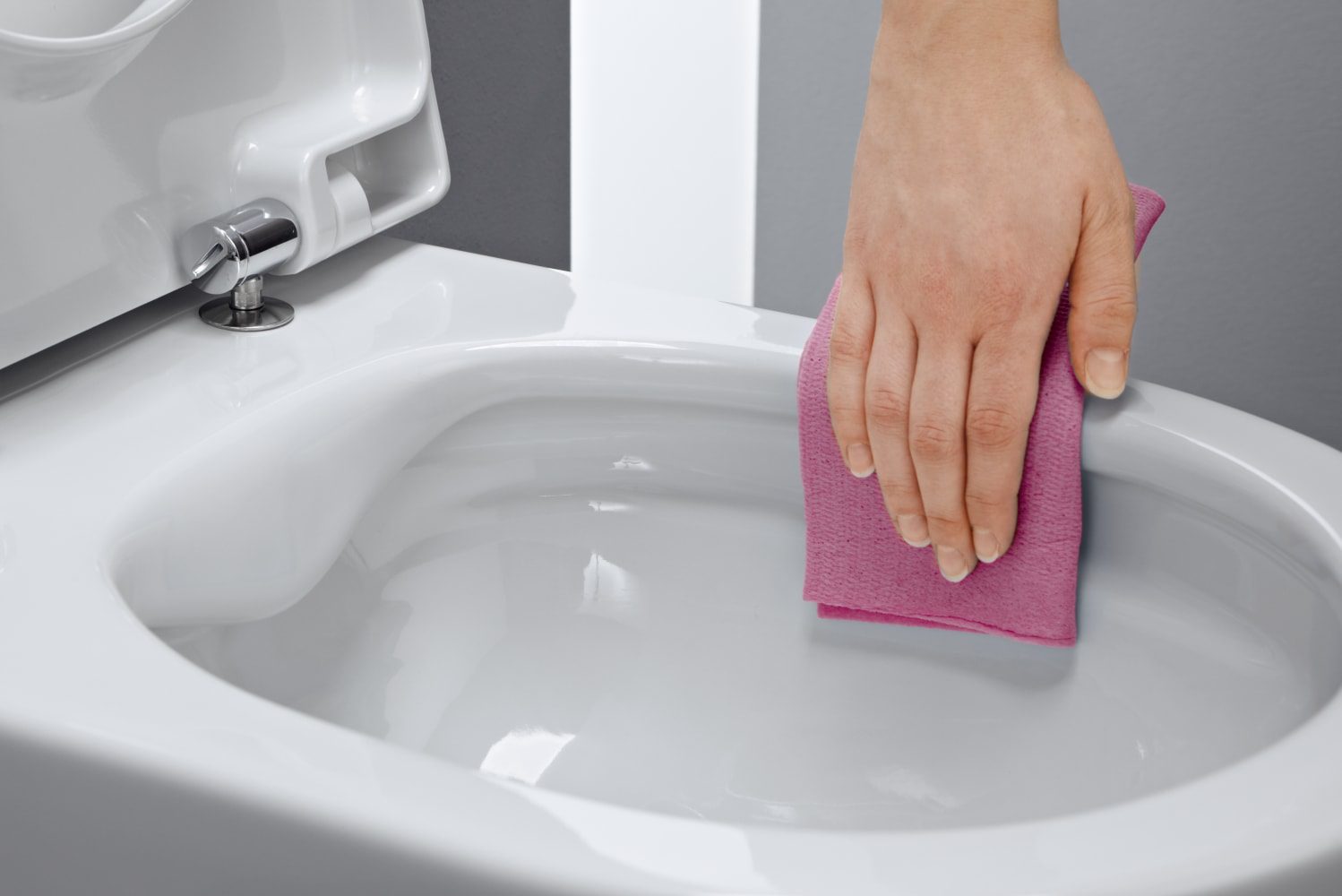 Instructions:
Instructions:
- Remove the toilet tank lid carefully. Lift and place safely.
- Drop one 10 gram ClO₂ tablet into the back of the tank (behind the overflow tube, out of direct visible water line if possible).
- Replace the tank lid.
- Drop one 4 gram ClO2 tablet into the bowl and close the lid.
- Walk away (go to work, relax, sleep)—let it sit. If you have a high-traffic bathroom (lots of flushes) you can treat once a week; for normal traffic, treat every other week (twice a month).
- After the dwell time, flush the toilet to move treated water through the bowl and water lines—let the treated water travel into all the nooks: the rim holes, the curve, the trap.
- If someone uses the bathroom during the dwell time: you might see tinted water (sometimes a reddish hue)—don't panic! That color is a harmless sign of the ClO₂ interacting with biofilm or mineral deposits. It isn’t a health hazard. Just flush when you can.
- After flush, you’re set. Your toilet bowl, water lines, and tank are benefiting.
What it does for you:
- Cuts down on hard-water stains and mineral build-up (the ClO₂ penetrates the deposits).
- Reduces mold and biofilm (“gunk you don’t see”).
- Makes your job easier—less frequent scrubbing.
- Gives you genuine sanitization confidence.
- Keeps your septic system happier than bleach-loaded treatments would.
Extra Maintenance Tips
- Once a month: treat the toilet brush holder. Drop a 1 gram ClO₂ tablet (e.g., using the same product line in a smaller dose) into the holder with water, let sit, rinse. Helps sanitize the brush itself (yes, that’s important).
- If you haven’t done the initial ClO₂ treatment in a while and you have visible build-up, run a moderate scrub first (use bio-clean ) before beginning the ClO₂ regime. It pre-breaks proteins and biofilm making the ClO₂ more effective.
- Ventilate your bathroom. Keep moisture down—less moisture means fewer mold and mildew scent problems.
- Don’t mix ClO₂ with other strong cleaners during the treatment dwell time. Keep it simple and safe.
Safety Considerations & Precautions
Here are your “Don’t panic—just be safe” rules:
- Always read the label/instructions on your ClO₂ tablet product.
- Wear gloves when handling tablets. Never touch the tablet directly.
- Ensure decent ventilation (open window/fan).
- If you accidentally splash the tablet dust or solution on skin: rinse thoroughly with water. Avoid contact with eyes.
- Do not mix ClO₂ tablets with other cleaning chemicals—especially bleach or strong acids.
- Don’t treat with huge concentrations thinking “more is better.” For septic systems, low-dose, proper interval use is key. According to one user experience: “Chlorine Dioxide is safe for septic systems as long as you’re not consistently pouring high concentrations (PPM) into the tank on a daily basis.”
- Know your septic system: while ClO₂ in moderate amount is safer than repeated heavy bleach doses, you should still monitor. Plumbing-industry advice indicates that bleach and harsh chemicals do cause damage when overused.
Why Your Septic System Will Thank You
When you use harsh bleach-based toilet cleaners frequently, you risk killing off the very bacteria your septic system relies upon. That can lead to slow drains, backups, and costly repairs.
With a properly managed ClO₂ program:
- You avoid the frequent “shock” to the microbial ecosystem in the septic tank.
- You still achieve sanitization and odor control without over-killing the beneficial organisms.
- You reduce cleaning frequency and build-up, so your system doesn’t have to work as hard or get challenged with extra gunk.
Bottom line: You get a cleaner toilet and a healthier septic life.
Cleaning Timeline Snapshot
| Interval | Action | Benefit |
|---|---|---|
| Weekly basic | Brush bowl, wipe seat/hinges/base | Keeps visible grime and smell down |
| Every other week (normal traffic) or every week (high traffic) | Drop a 10 g ClO₂ tablet in tank, 4 g ClO2 in bowl, sit, flush after dwell | Deep clean, biofilm reduction, sanitizing |
| Monthly | Treat toilet brush holder with 1 g ClO₂ tablet | Keeps brush fresh, prevents cross-contamination |
| Ongoing | Ventilate room, keep moisture down | Fewer mold/mildew odors, less strain on system |
Closing Encouragement
A clean, fresh-smelling bathroom isn’t just pleasant—it signals health, care and good home hygiene. Using a smart, septic-safe method like ClO₂ tablet treatment (rather than relying solely on bleach) gives you sanitization power and protection for your septic system. With a simple routine, you cut down on stains, biofilms and odors, while maintaining system balance and cleaning efficiency.
You’re not just cleaning a toilet—you’re raising the bar on home hygiene, protecting your septic system, and creating a fresh-smelling sanctuary in your bathroom. With this ClO₂-based approach, you’re stepping into a smarter, more forward-thinking cleaning routine. Go ahead—give it a try this week and watch your bathroom sparkle (and breathe easier). Your septic system will send you a silent “thank you,” trust me.
Let’s get cleaning! 🚿✨
10 Frequently Asked Questions (FAQ)
-
 Is ClO₂ really safe for my septic system?
Is ClO₂ really safe for my septic system?
Yes — when used in the correct dosage and intervals. Unlike heavy repeated bleach use, ClO₂ in low-dose treatments is far less disruptive to the beneficial bacteria in your septic tank. -
Can I drop a ClO₂ tablet in the bowl instead of the tank?
For full system benefit (tank + water lines + bowl), placing the tablet in the tank allows treated water to circulate. Dropping in the bowl is less effective for ring buildup and water line penetration. -
What strength tablet should I use?
Use one 10 gram ClO₂ tablet for the tank every other week (or weekly in high-traffic restrooms). For brush-holder or smaller applications, 1 gram is suitable. -
Will the toilet water change color after treatment?
Possibly—if anything is reacting (biofilm, mineral deposits) you might see a tinted or reddish hue. It’s harmless, just flush when you’re ready. -
Can I still use my regular toilet cleaner along with ClO₂?
No—use a mild cleaner for your weekly wipe and brush. But do not combine strong chemical cleaners with bleach with your ClO₂ treatment during the dwell period. -
How often should I clean the toilet brush and holder?
Once a month treat the brush holder with a 1 gram ClO₂ tablet in water, let it sit, rinse. Helps keep cross-contamination down. -
Does ClO₂ remove hard water stains and rings?
Yes—one of the benefits is that ClO₂ helps break down mineral and biofilm deposits that traditional cleaners struggle with, making your bowl cleaner with less elbow grease. -
My home has a septic tank—what happens if I use bleach often?
Frequent bleach use can kill the good bacteria in the tank, leading to slower breakdown of waste, backups and expensive drain field problems. -
Is ventilation really necessary when using ClO₂?
Yes—it’s always a good practice when using any chemical treatment. Fresh air helps disperse any gases and ensures comfort during treatment. Crack a window or running a fan will be sufficient enough ventilation. -
What if someone uses the bathroom during the ClO₂ treatment dwell time?
It’s okay. The water may be tinted. Just ensure they flush after, and move on. It won’t have the same intense reaction as a full-bleach treatment might, and your system remains safe.


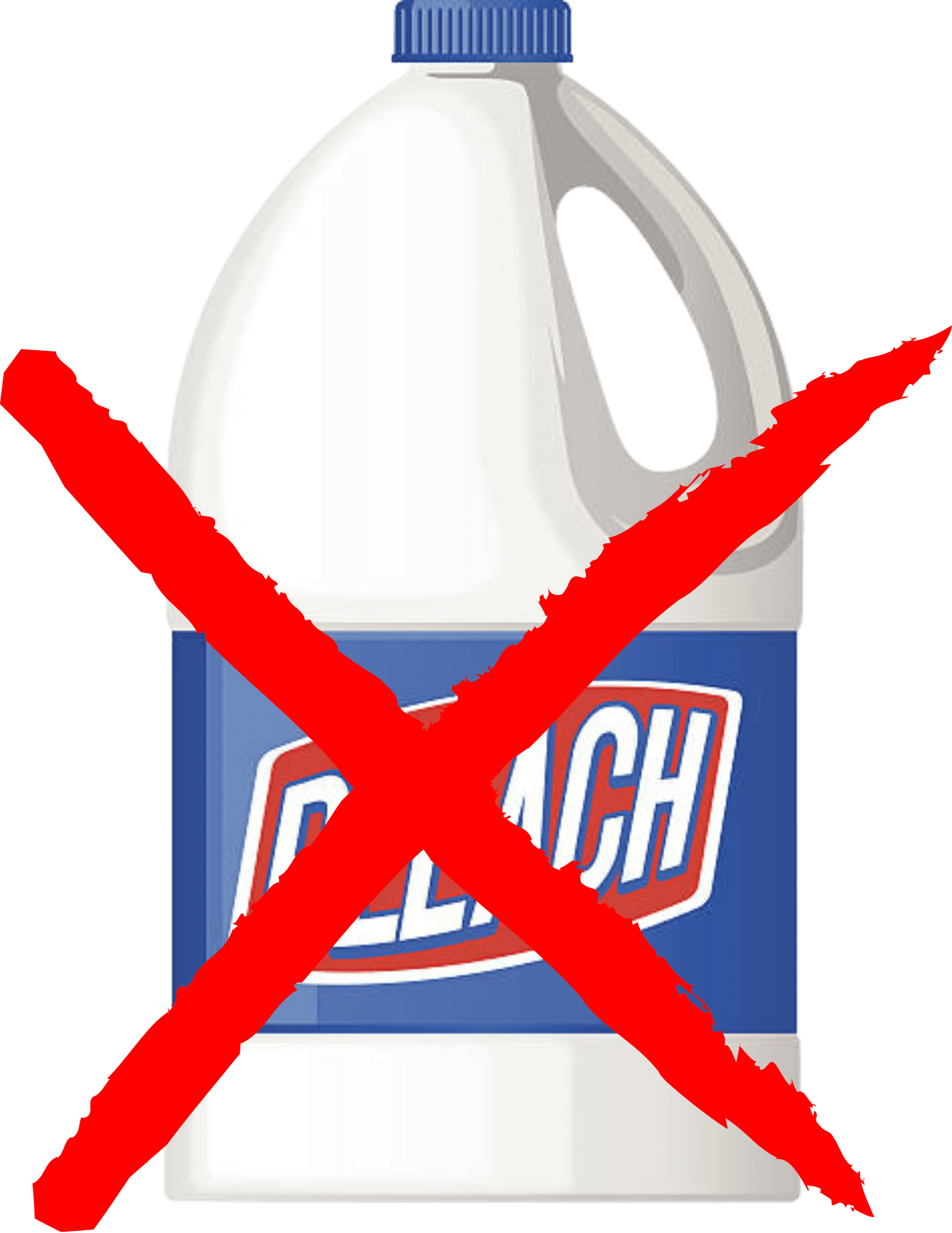 Why Use ClO₂ Instead of Bleach?
Why Use ClO₂ Instead of Bleach?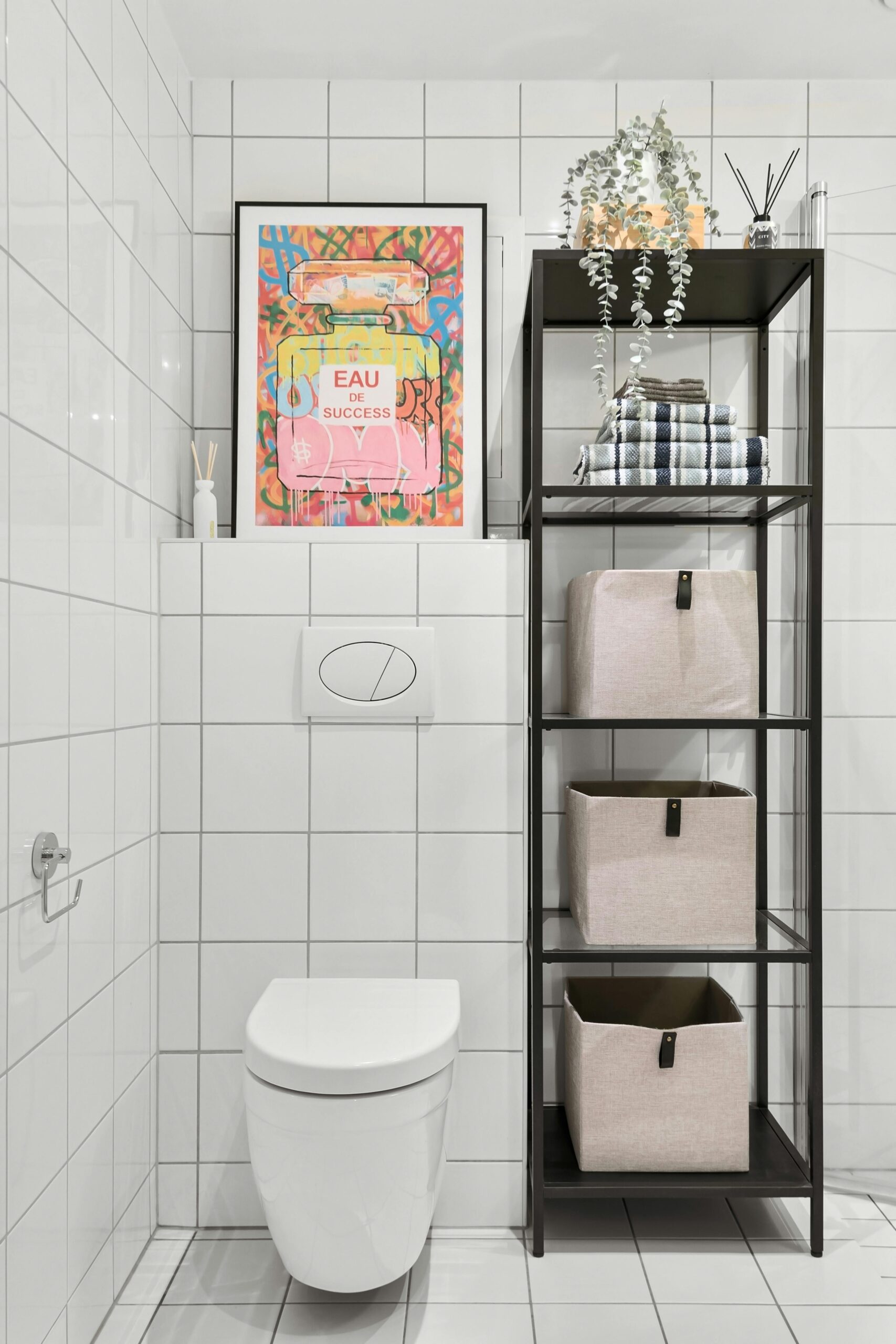 Is ClO₂ really safe for my septic system?
Is ClO₂ really safe for my septic system?